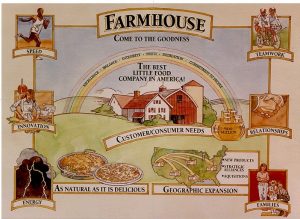
You are up to your eyeballs in change. The US pandemic is waning, but markets are still recovering, workforces are shifting, and the imperative of new technology hasn’t let up.
But you’re on top of it. You are clear on the initiatives your organization needs. Now you’re trying to manage a suite of overlapping rollouts, so you need a strong communication plan to get employees on board.
Your senior execs have delivered PowerPoint presentations, participated in talking head videos and sent sponsorship emails. You have a network of people to answer questions and send you feedback. You’ve branded the projects, distributed swag, launched apps…
But you’re not getting the traction you hoped for. People seem unaware of the key points, or just plain unaware. Execs are frustrated; they say, “We told them. Why aren’t they getting it?” Employees are not using the new tools and approaches you’re trying to deploy. Why not?
According to the Radicati Group, 281 billion emails are sent worldwide daily. With 3.8 billion users, that’s 74 emails per person. Every day. Bain Consultants estimated in a 2014 Harvard Business Review article that 15% of company time is spent in meetings. Verizon commissioned a study that found people attend over 60 meetings per month, accounting for 37% of their time. The WSJ found that we are distracted every 3 minutes.
So what’s going on?
Your employees are being assaulted by information and demands on their time.
You are not in the communication business, you are in the ATTENTION business. You have to help people cut through the noise and focus on what’s important. To do that, you have to rise above the fray. Everything you deploy should grab attention. Your messages must be obviously different, relevant and worthy of people’s limited time.
Here’s how to focus attention:
1. Keep it simple.
Distill your point to its essence. It’s your three-word theme for the year, the mantra that gets you to the project end, the political platform statement, or the four words that capture the problem, solution, approach and results.
A childcare company was implementing new technology. Here’s how they distilled it to four words. “Our caregivers are overwhelmed. The solution? Make sure they are connected. They deserve a thoughtful approach to this implementation. What do we want in the end? Energized people.” These words were easy to remember without relying on PowerPoint. Anyone from any department could provide examples for those words, and they did. Simplicity creates clarity.
2. Use visuals.

When he ran Farmhouse Rice Company, Peter Molloy created a “visual vision” to convey company direction.
Researchers have found that people can remember 2,000 pictures with 90% accuracy, likely because visuals engage more of the brain. It doesn’t matter whether a person is trying to memorize the images or is casually exposed to them. There’s an extra, unconscious leap needed to translate an image to a word, which is why words are harder to remember. Line drawings are particularly easy to recall, perhaps because they are more visually complex. Crude hand drawings are more memorable than stock images. Dan Roam has a great book, Draw to Win, which can help you overcome your self-consciousness and create your own powerful visuals.
When he ran Farmhouse Rice Company, Peter Molloy created a “visual vision” to convey company direction. It was so effective, he used the same technique again when he became CEO of La Terra Fina.
3. Use novelty or contrast.
Subconsciously, we are constantly looking for threat. That’s why anything unusual piques our interest. When you create disruption — whether in stories, process, color, structure, volume – makes people notice.
Years ago, an IT department in a Chicago hospital implemented a standard approach to requesting support and custom reports. People were accustomed to paging their favorite IT person to fulfill the request. (Yes, it was that long ago!) When they moved to the new process, they changed all IT pager numbers. A small disruption signaled a new way of working. Look for variety and surprising ways to make your point.
4. Use environmental cues.
Look for elements in the workplace itself that can serve your purpose, like the physical space, processes, screens, codes, reporting relationships, and job titles. The real world encodes the conceptual. And often what people encounter every day contradicts what the company is telling them.
Chevron did it right. Years ago, they decided to create a culture of safety. That meant asking introverted engineers to be a little confrontational if they saw something unsafe. All the communication in the world wouldn’t address that behavior. So they made a point of starting every meeting with a “Safety Moment,” where each person had to identify one thing they saw that day that was unsafe. Over time, they layered it with other activities, such as assessing each person’s work station to ensure it was ergonomic, or confronting one another for driving while talking on their cell phone. These environmental cues reinforced behavior in ways no email campaign could.
Traditional communication plans fail because they don’t use the best thinking on human behavior. Don’t churn out information and hope it sticks. Focus attention on the behaviors you want and you’ll achieve your business outcomes.




